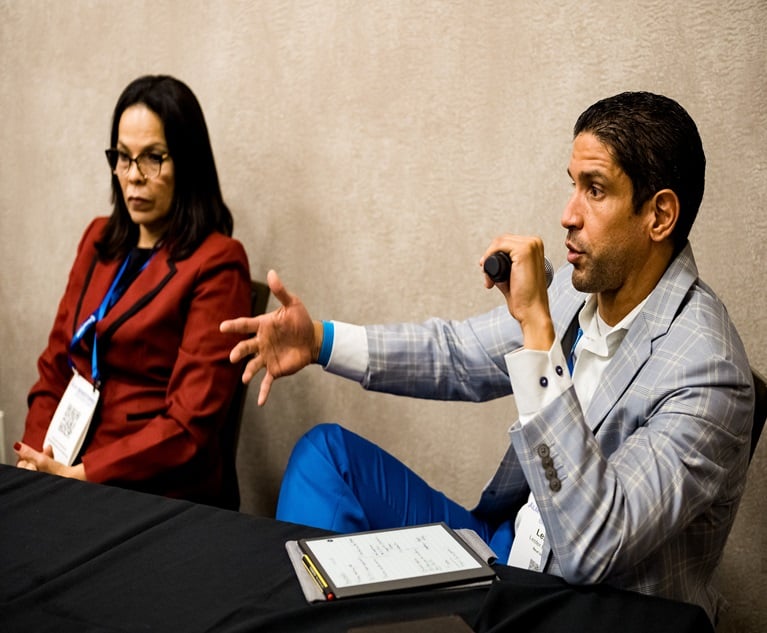A penny saved can be worth a lot more in business. When aninsurance agency saves a penny through better carrier compensation,it can be worth a dime or even more. Now think of it this way: Ifan agency has a 10 percent profit excluding contingencies, then on$1 million in commissions the agency makes $100,000. If throughbetter carrier management, the agency can increase its compensationfrom carriers by $100,000, then the agency has just made theequivalent of $1 million in sales.
|In these tough economic times and the softest insurance marketin many decades, many agencies are searching for ways to savepennies. Using the example above, an agency can make $1 million insales to make a $100,000 profit. Another opportunity is to becomebetter managers and negotiators to improve the bottom line profitwithout having to increase the top line nearly as much. After all,how easy is it to increase sales by $1 million?
|Part of the answer may be based on the person's particular skillset. Some people are good salespeople and poor managers. Thesepeople will focus on sales as the solution, and a lucky fewgenerate $1 million of additional commissions on their own. For therest, or for anyone who can benefit from smarter management andnegotiation, here are six ways to make a penny earn even more:
|1 Negotiate for more compensation. Agents havea plethora of options for negotiating for more compensation fromtheir carriers: companies can increase contingencies, commissionsand marketing money–and the list goes on. The key question to askis, “What do I need to do to have you pay me more money?” Keep inmind, however, some criteria do exist. The agency needs to be ingood standing with good results and present a logical, fair case.Asking for more money on a $250,000 book with a 70 percent lossratio is probably a lost cause.
|2 Implement good procedures. Well-writtenprocedures that are enforced and followed by everyone in the agencywill greatly improve efficiency and productivity. And the benefitsdon't stop there–good procedures that are followed will alsoincrease profits, increase sales, improve quality, decrease E&Oexposures, make training easier and improve moral. The rewards ofgood procedures make it well worth the effort.
|3 Hire producers right. A bad producer may costan agency $200,000, and often much more. APRS shows the averagecompensation of a new producer is $60,000. Benefits average 20percent of compensation, or $12,000. My experience is that mostproducers are given at least 2 or 3 years to prove themselves. Soat $72,000 annually, that is $144,000 to $216,000, not includingoverhead, training (good producer schools are $15,000 to $25,000)or soft costs. And what does the agency have to show for it? Alesson learned and plenty of frustration. Hiring a producercorrectly costs a little more–maybe $250,000 all else beingequal–but the end result is a large book of business generating$400,000 or more after 5 years. That is a great return oninvestment.
|4 Reduce staff turnover. I've seen manymeasures suggesting that hiring a new staff person costs around 50percent of the person's salary. If you are underpaying your staffand have high turnover, consider whether it is more profitable topay 10 percent more or to hire new staff regularly. The money savedby increasing staff tenure can be a handsome addition to the bottomline, not to mention the likely gains in productivity and reductionin E&O exposures.
|5 Pay for profits. A good compensation planshould only pay producers for making profitable sales. Producersshould be paid only for accounts that meet specific requirementssuch as account size and account quality. Many agencies today aremaking a major mistake by only setting minimum account sizes.Larger accounts can be just as unprofitable as small accounts ifthey are of inadequate quality. Similarly, well-managed smallaccounts can be more profitable than large accounts.
|Very few agencies are so efficient that they can afford to payproducers for accounts that generate less than $500 commission andstill make a profit on that sale. Truthfully, the number is morelikely $1,000 for most agencies. It is not that these accounts cannot be profitable; they just are not profitable if a producer ispaid for them. Make every account profitable by not payingproducers on small accounts and pay only for quality accounts.
|Another reality is that most commercial accounts that generateless than $100 in commissions are not profitable, even withoutpaying a producer. The servicing cost is just too high. To learnyour agency's absolute break-even commission, divide your totalannual expenses excluding producer compensation by the total numberof accounts. This is overly simplistic for agencies with multipledivisions and such, but the end result will give you a number closeto your absolute break-even commission amount.
|Pay profitable employees well, pay poor producers nothing, andthe agency will be well rewarded. If the accounts below theagency's break-even amount are eliminated and producers are notpaid for small accounts, most agencies will realize a suddenincrease in profitability.
|6 Hold producers accountable. This soundssimple in words, but it's tough in reality. When producers are heldaccountable, their average commission per account will increase,the cost of writing and servicing the account will be less, lossratios will likely decrease, and the agency's E&O exposure willdecline. I have worked with many agencies that have turned on theaccountability switch, and the improved results are easy tosee.
|Another aspect of accountability is not continuing to employunprofitable producers. Using industry averages, a producertypically must generate at least $250,000 in commission for theagency to make any money. Producers with books less than thisamount are most likely costing the agency more money than theygenerate. How many producers do you have in your agency with booksthat fall below this threshold?
|In these tough times, we have to find ways to offset our losses.Combining these examples with an agency's strength, will createexceptional results.
Want to continue reading?
Become a Free PropertyCasualty360 Digital Reader
Your access to unlimited PropertyCasualty360 content isn’t changing.
Once you are an ALM digital member, you’ll receive:
- All PropertyCasualty360.com news coverage, best practices, and in-depth analysis.
- Educational webcasts, resources from industry leaders, and informative newsletters.
- Other award-winning websites including BenefitsPRO.com and ThinkAdvisor.com.
Already have an account? Sign In
© 2024 ALM Global, LLC, All Rights Reserved. Request academic re-use from www.copyright.com. All other uses, submit a request to [email protected]. For more information visit Asset & Logo Licensing.








